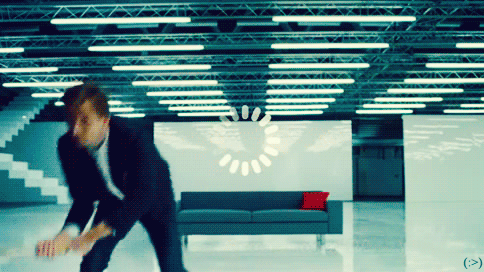
Digital Customer Experience Strategy: Bad CX is Expensive

Our goal in managing digital customer experience strategy is largely to identify pain points in the online customer journey and eliminate them. Where there’s friction, there’s potential for churn and drop in conversions. On the other hand, reduction in friction means possibility for increased loyalty, shortened sales cycle, and more revenue (60% of people are willing to pay more for a better customer experience).
One of the most important things you need to know about eliminating friction is that your customers hate waiting almost more than anything else. I mean, we spend a lot of time doing it!
- 60% of people that you put on hold just hang up (and 34% never call back after that)
- 66% of people will consider switching to your competitor if left on hold for too long
- The average online reader will only give you 15 seconds to make an impression before they leave.
A major factor in all of this?
Perception.
Sometimes all you need to change to improve your customer experience is to change their perception. And the best way to do that is by figuring out ways to innovate their experience to make their time with you seem more enjoyable.
A Quick Anecdote About an Airport

There’s a story about a Houston airport that illustrates this concept well.
As it’s told, executives of this airport were in a pickle. Passenger complaints were rising about the length of time of the baggage claim process. Some initial fixes were set up, including hiring additional staff. These brought the process time down to 8 minutes, decent as far as airports go.
But complaints didn’t drop.
A look into why revealed the problem was in the way the customer journey was laid out more than the actual process time.
Passengers only had to walk for 1 minute to get to the baggage claim area, where they then had to passively wait for 7 minutes to get their bags. Standing around and waiting accounted for 88% of their total journey, hence the friction.

As a solution, the airport increased the distance from where passengers disembarked to where they picked up baggage. The walk now took 6 minutes while the wait was only 2.
Complaints dropped significantly.
What changed?
The total process time, which customers identified as the original problem in their complaints, was still the same.
It was the occupied time versus passive, unoccupied time that created the friction.
Everyday Examples

Innovation in these periods of waiting have long been a key area of focus in the best customer experience strategy.
Grocery store layout is entirely done with CX in mind. Coincidence that the bakery, with the delicious smells of fresh pastries wafting in the air, are located right by the entrance? Nope, they want to entice you from the start of your shopping trip so your resolve to eat clean for the week is worn down immediately. And the checkout aisles lined with candy bars and sweets? An enticement to provide pleasure and distract you as you wait in line to exit. (Obvious, but effective to the tune of $5.5 billion a year.)
The lines at Disney theme parks don’t wrap around 100 corners for nothing either. They don’t want you to see the full length of the line and get frustrated in advance. The “Estimated Wait Time” displays are also strategic. Having an idea of what to expect eases the minds of those waiting. That is, if the estimated time turns out to be equal to or longer than the actual wait. Otherwise customer frustration could increase.

And AT&T found that customers hang up when on hold via telephone after 90 seconds, unless there’s music playing in the background. The music led to the perception that a 30-second wait was only 15 seconds.
Getting Back to Digital Customer Experience Strategy
Applying this to the digital customer experience, most of us know that customers are no more patient online than they are in real life.
We want fast service, fast checkout, fast response when we visit a website. It doesn’t matter if we’re on an eCommerce site looking to make a purchase or filling out a form to get a demo.

Your user experience with streaming apps like Netflix or YouTube were built with this in mind. You don’t have to wait for a full piece of content to upload before you can watch. A portion of your content is watchable before the entire thing is ready, which provides you with occupied, active wait time rather than having to sit in silence (anybody else remember the days of Napster?).
And websites preload portions of content to show you and allow you to start interacting with site content without waiting for a full page to be ready.
Digital Friction Loses You Money
Improving digital customer experience at points of interaction or wait is where the money is.

PayPal revolutionized eCommerce with a professed commitment to “frictionless checkout.” According to their website, “Payment processing should enhance the shopping experience, not interfere with it. Every part of the process, from the shopping cart to the back end, can be used to help drive conversions.” (You should also take a gander at Fast, a new startup creating some buzz on Twitter that similarly targets removing friction from digital checkouts.)
Boston-based company Drift created an entirely new category called conversational marketing with a chatbot solution intended to be “the fastest way to move buyers through your marketing and sales funnels.” It helps convert inactive, passive wait when customers land on your website looking to complete an action into an occupied opportunity with the use of marketing AI. (For the record HubSpot, Salesforce, Intercom, Marketo and Pardot also offer similar chatbot solutions.)
The Wrap Up
So to wrap things up, here are three key takeaways you should remember about customer experience strategy and time.
1. Extend the “active phase” of wait time for your customers. Don’t leave them unoccupied with nothing while waiting on you.
2. Your customer’s perception of the experience is more important than the actual reality. Map out the journey to identify where you can innovate at various touch points.
3. First impressions aren’t everything! Research shows that the end of the customer journey is more important than the beginning. Customers remember the end of the experience and whether their sentiments are positive or negative when they look back at their total interaction with your brand.
If you’re interested in more about reducing friction in the “queueing” segments of customer experience, check out this research report by Richard C. Larson, one of the leading minds on the topic. And here’s another dope article I enjoyed reading while researching this article about Performance and User Perception.
Let’s talk CX! Add me on LinkedIn or tweet me!
You can also sign up for my newsletter and get my content (plus other insight) delivered to you weekly.


